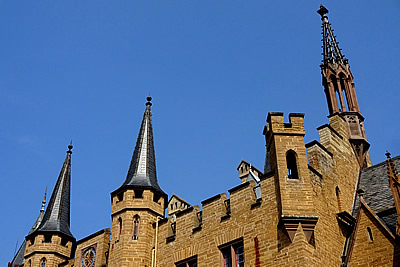

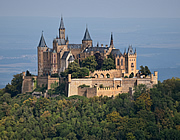
Tübingen is full of beautiful medieval buildings and the university museum has many fascinating exhibits. Nearby is the fairytale neo-Gothic hilltop castle of Hohenzollern.
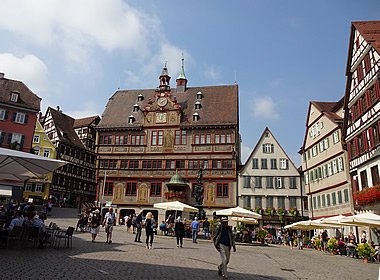
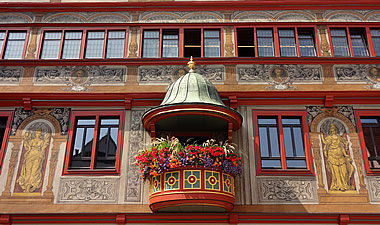
The town is first mentioned in 1078 though the university for which it is famous was not founded until 1477.1 It stands on a ridge between the Neckar and Ammer rivers.
The centre of the town has many beautifully restored medieval buildings including the 15th century Town Hall on the Market Square.
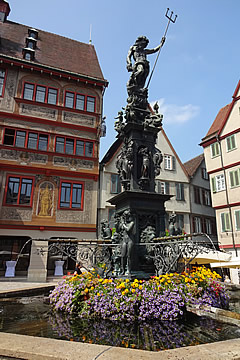
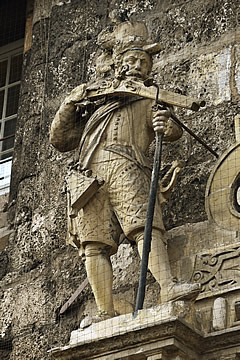
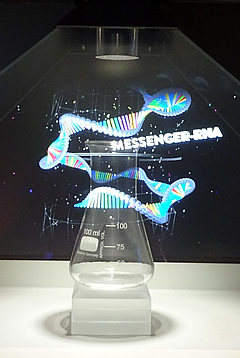
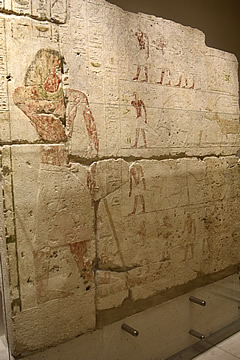
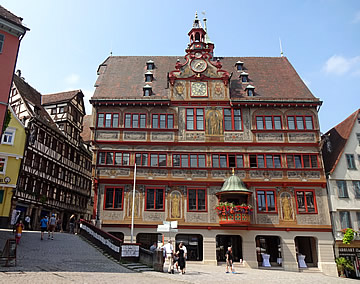
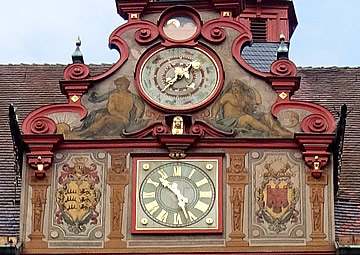
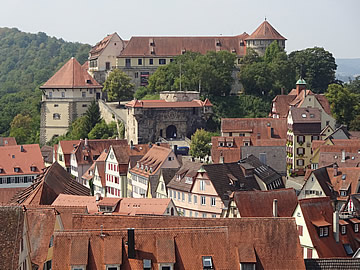
We walked up from Marktplatz to Schloss Hohentübingen, mostly 16th century though a castle has stood on this site for well over 900 years. It now houses various university departments and collections.
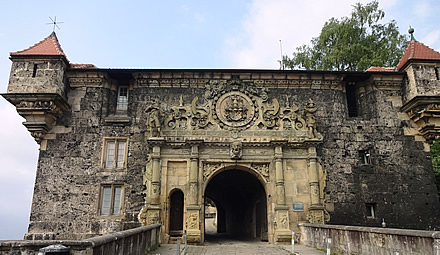
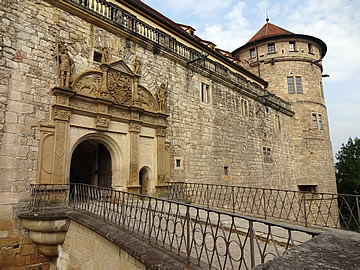
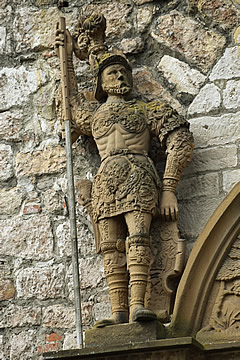
The inner and outer gates of the castle have some fine sculpture, particularly in the form of soldiers flanking the coat of arms of the Dukes of Württemburg above the entrances.
We visited some of the many collections housed in the castle, only a few of which are permanently open.
The Cradle of Biochemistry Collection is displayed in an early 19th century chemistry lab which was installed in the former kitchens of the castle. The guide leaflet lists some notable events which occurred here, including the discovery of nucleic acid, the building block of DNA and RNA, by Friedrich Miescher in 1869.
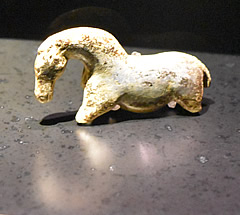
The Early Prehistory Collections has some amazing prehistoric carved items from the Swabian Jura, including 40,000 year old ivory figurines and fragments of flutes made from bird bone.
The Ancient Egyptian Collection is also very impressive, especially the reconstructed sacrificial or offering chamber of Seschemnefer III of Giza.
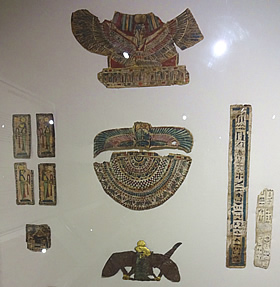
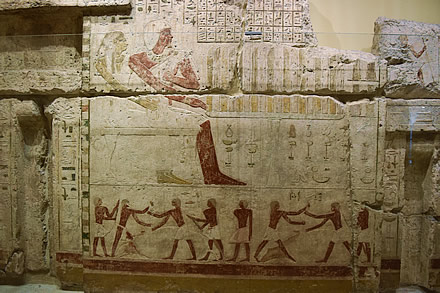
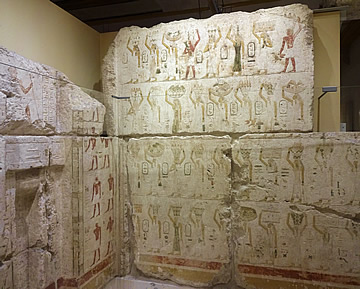
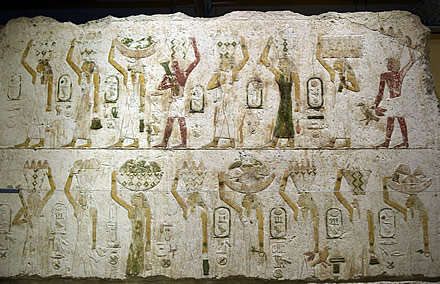
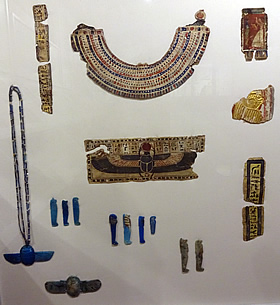
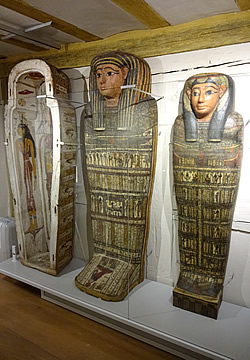
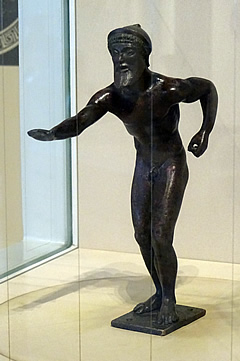
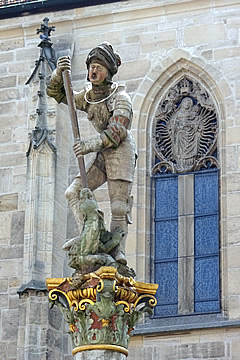
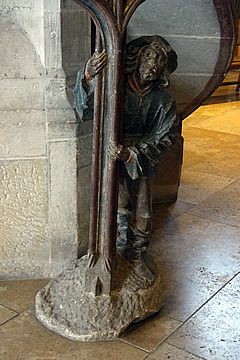
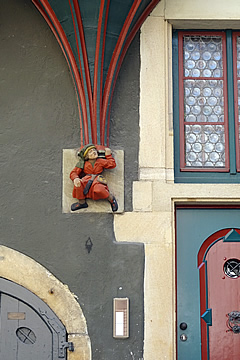
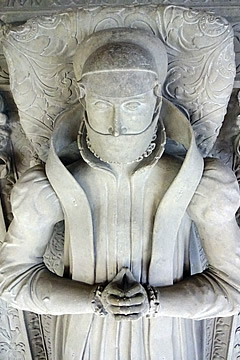
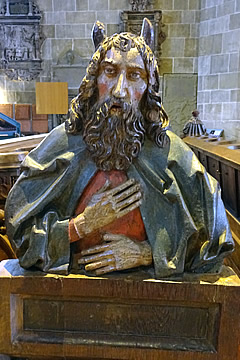
Finally we went to the Classical Archaeology Collection to see in particular the Tübinger Waffenläufer - a bronze statuette of a Hoplite runner in position to start the hoplitodromos, a prestigious race, from around 490 BC. The hoplites were ancient Greek soldiers.
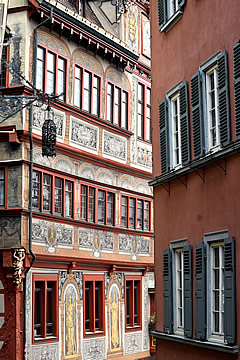
We wandered back for a light lunch in the Marktplatz before exploring the town, first going to the Stiftskirche - the Collegiate Church. This late 15th century Gothic church has a dozen or so tombs in the choir with beautifully carved effigies. I was intrigued by the females with bands over their mouths and was told that these women were widows.
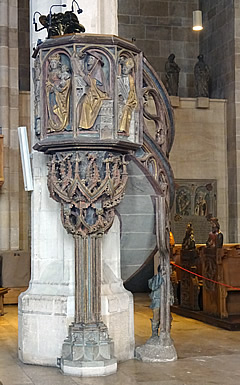
There are some wonderful carved wooden figures too, on the pulpit and ends of the pews.
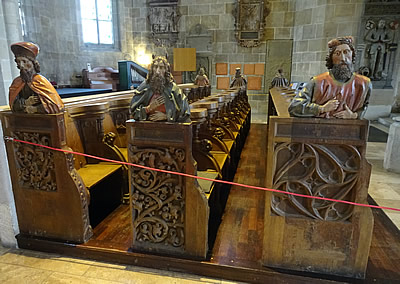
We climbed to the top of the tower for fine views over the town.
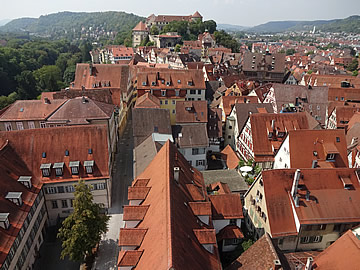
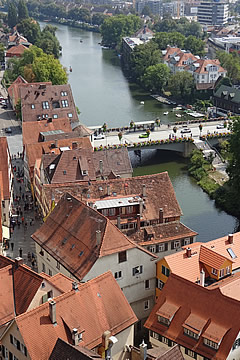 River Neckar and steps leading down to the island.
River Neckar and steps leading down to the island.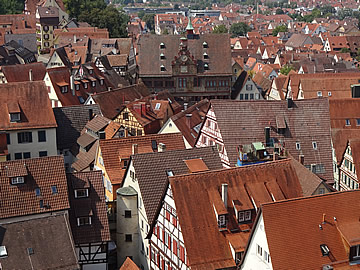
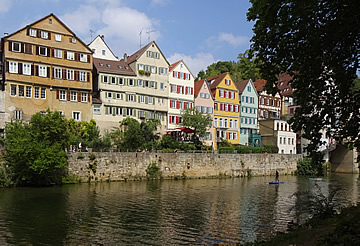
Reached from a bridge across the River Neckar a long, narrow island and its avenue of 200 year old plane trees is a peaceful place to walk with a lovely view of the medieval houses on the riverside.
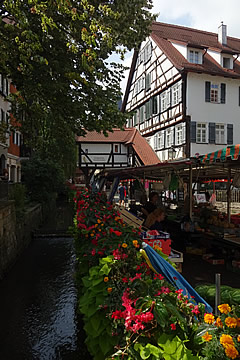
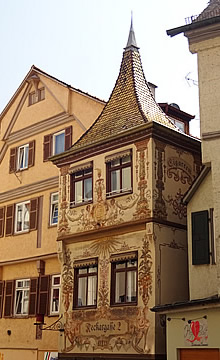
The town is very picturesque with tree-lined narrow canals bedecked with flowers, old timber framed buildings and others with ornate painted decoration.
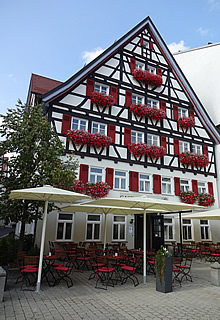
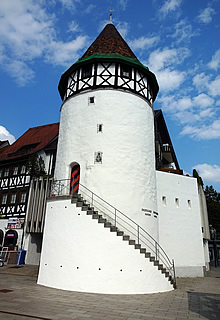
We were staying at the Gasthof Linde in Albstadt, about 20 km south of Tübingen. Dinner at the gasthof was most enjoyable, the local dish of beef and onions was very good indeed.
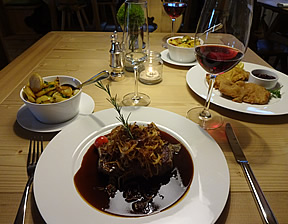
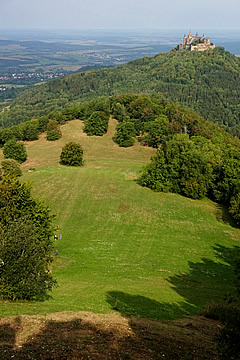
The following day we set off to visit Burg Hohenzollern. We had discovered that there is a hill just south of the castle which has a fine view of the cstle so we walked up before visiting the castle itself.
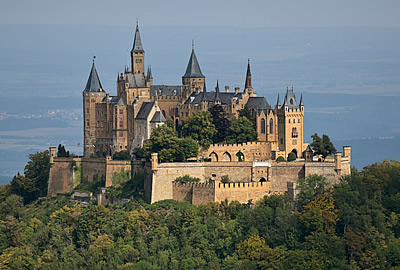
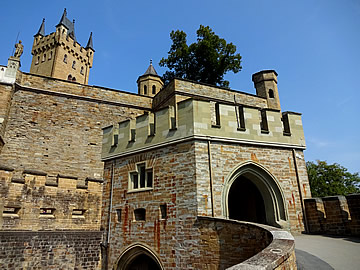
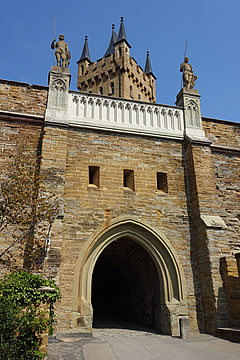
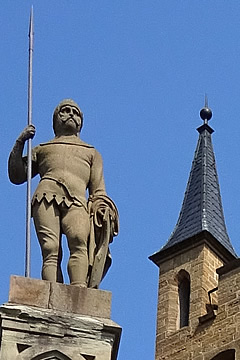
It's a very steep climb from the car park up to the castle but there only seemed to be one small shuttle bus operating.
The castle is entered via a series of gatehouses and spiral ramps; these together with a surrounding wall and bastions, and the hilltop location, make a fine defensive structure, a veritable fortress during the Thirty Years War.
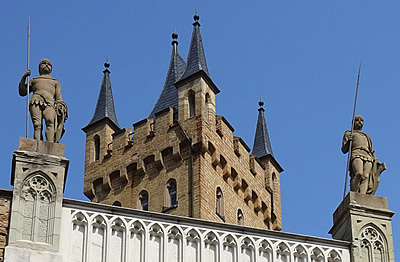
A house or castle has stood in this spot for almost a thousand years, maybe longer.2 After a long period of neglect it was restored in a neo-Gothic style by King Frederick William IV in the 19th century.
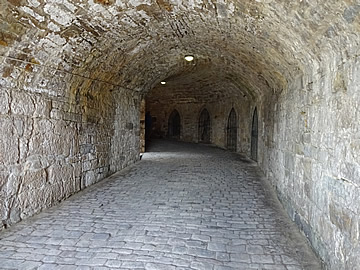
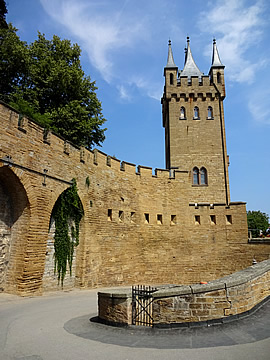
No photography is allowed in the rooms which are quite lavishly decorated with many an Imperial eagle embossed on wallpaper and stitched into upholstery, and fine decorative floors - felt slippers must be worn over shoes.
But it is really the exterior which is the attraction. A very Romantic castle with its castellated towers and turrets and Gothic arches.
